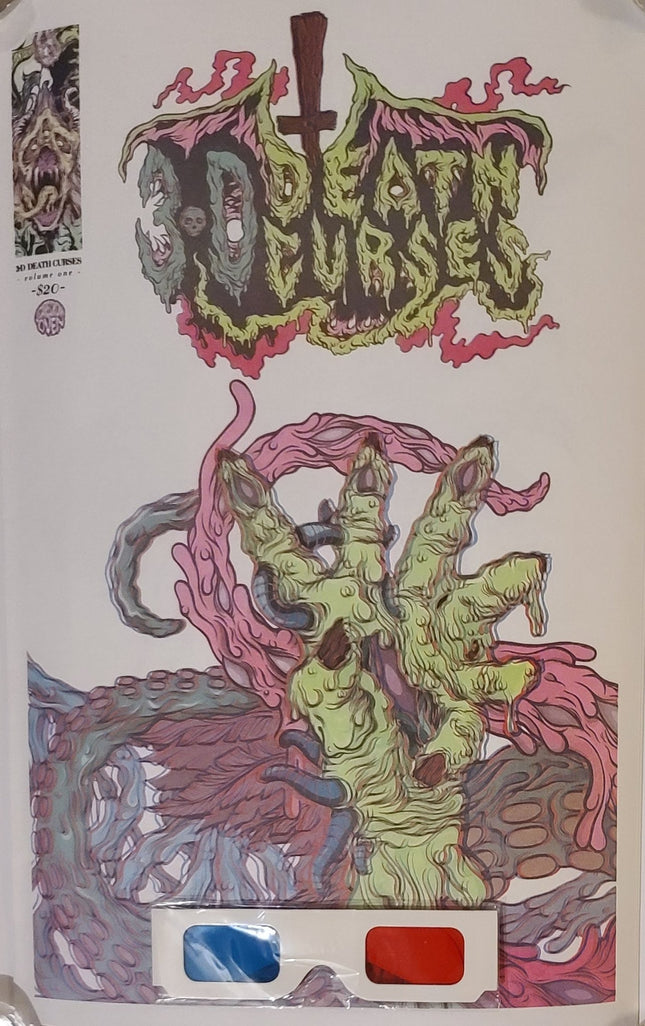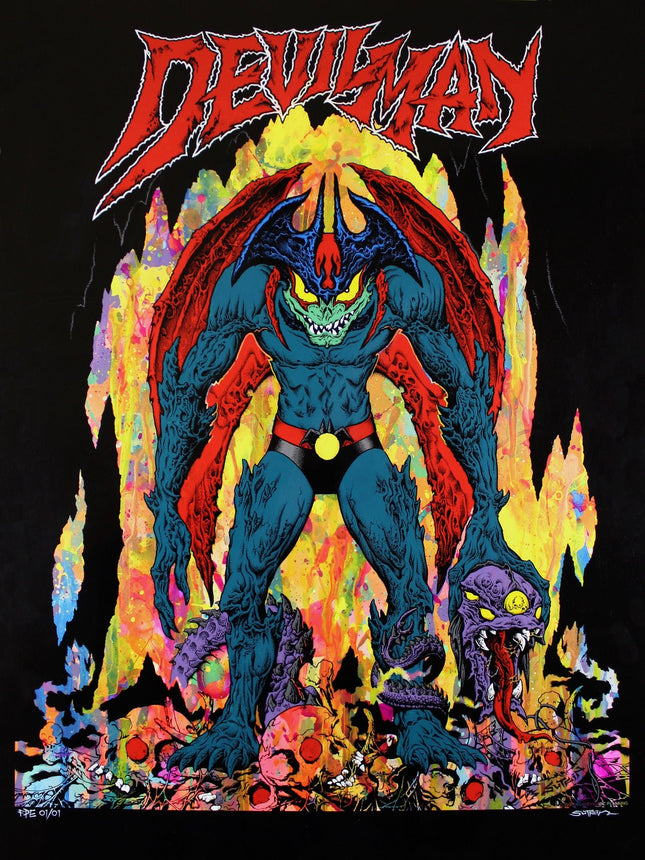
Devil Demons & Satan

Scarecrowoven 3D Death Curses Volume 1 Book Zine by Scarecrowoven
3D Death Curses Volume 1 Limited Edition Art Comic Book Zine with Real 3D Art by Scarecrowoven. Includes working 3D glasses and 14 pages of art.
$37.00$26.00

Mike Sutfin Devilman Silkscreen Print by Mike Sutfin
Devilman Limited Edition 9-Color Hand-Pulled Silkscreen Print on Fine Art Paper by Mike Sutfin, Graffiti Street Artist Modern Pop Art. 2015 Limited Edition of 300 Artwork measuring 18" x 24", these prints needed eight screens and nine colors to capture their vibrancy on the 100# c stock French Pop-Tone Berrylicious paper used, and the back view of the character is printed on the reverse side of the print. Mike Sutfin's Devilman: A Symphony of Color and Chaos The "Devilman" limited edition silkscreen print by Mike Sutfin is a formidable example of how street pop art and graffiti artwork can bring together vibrancy, intensity, and a touch of the macabre. This 2015 piece, a limited edition of 300, captures the essence of its subject matter through a stunning 9-color palette applied via eight screens onto 100# c stock French Pop-Tone Berrylicious paper. Measuring 18x24 inches, the artwork showcases Sutfin's mastery in a modern pop art context, providing a fiery representation of the titular character with a complexity that demands attention. The Artistic Process Behind Devil man's Creation The creation of "Devilman" is a testament to the meticulous silkscreen printing process. The requirement of 8 screens for the nine colors used in the piece illustrates the intricate layering process that imbues the artwork with depth and dynamism. The process is detailed, requiring precision and a keen eye for detail to ensure that each layer of color sits perfectly upon the last, building up to create the final arresting image. This technique, while traditional in its roots, is brought to life in a new way through Sutfin's skillful hands, blending the boundaries between street art and fine art. Interpreting Devilman: Street Pop Art Meets Mythology Sutfin's "Devilman" is more than a visual spectacle; it explores mythology, character design, and the eternal dance between good and evil. The figure stands amidst flames, a visual nod to the hellish realms often associated with devils and demons. Yet, the character is not merely a representation of evil. The complexity of the image, with its vibrant colors and detailed linework, suggests a narrative that goes beyond the binary of good versus evil. It speaks to the inner battles that rage within, the fiery potential for destruction and rebirth in every individual. The decision to print a back view of the character on the reverse side of the print adds a layer of depth to the artwork, inviting viewers to consider the many sides of the character – and themselves. This duality is a common theme in street pop art, where the surface image often belies a more profound story waiting to be uncovered by those who look closely enough. Mike Sutfin's "Devilman" is a powerful example of modern pop art's ability to combine traditional techniques with contemporary themes. The artwork stands as a beacon within the genre, showcasing how street pop art and graffiti can transcend their urban origins to enter the realm of collectible fine art. Through works like "Devilman," artists like Sutfin continue to push the boundaries of street art while also honoring the rich, colorful, and sometimes dark stories that have always been at the heart of human expression.
$245.00$172.00



